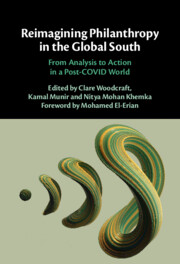815 results
Standardization of vegetative propagation in Terminalia chebula Retz. for germplasm conservation
-
- Journal:
- Plant Genetic Resources , First View
- Published online by Cambridge University Press:
- 06 March 2024, pp. 1-6
-
- Article
- Export citation
Alteration of Ilmenite in the Manavalakurichi Deposit, India
-
- Journal:
- Clays and Clay Minerals / Volume 42 / Issue 5 / October 1994
- Published online by Cambridge University Press:
- 28 February 2024, pp. 567-571
-
- Article
- Export citation
Utilisation of public healthcare services by an indigenous group: a mixed-method study among Santals of West Bengal, India
-
- Journal:
- Journal of Biosocial Science / Volume 56 / Issue 3 / May 2024
- Published online by Cambridge University Press:
- 22 February 2024, pp. 518-541
-
- Article
- Export citation
The impact of faecal diversion on the gut microbiome: a systematic review
-
- Journal:
- Gut Microbiome / Volume 5 / 2024
- Published online by Cambridge University Press:
- 19 February 2024, e4
-
- Article
-
- You have access
- Open access
- HTML
- Export citation
Contributors
-
- Book:
- Reimagining Philanthropy in the Global South
- Published online:
- 09 February 2024
- Print publication:
- 15 February 2024, pp xi-xii
-
- Chapter
-
- You have access
- Open access
- HTML
- Export citation
Tables
-
- Book:
- Reimagining Philanthropy in the Global South
- Published online:
- 09 February 2024
- Print publication:
- 15 February 2024, pp x-x
-
- Chapter
-
- You have access
- Open access
- HTML
- Export citation
Introduction
-
-
- Book:
- Reimagining Philanthropy in the Global South
- Published online:
- 09 February 2024
- Print publication:
- 15 February 2024, pp 1-16
-
- Chapter
-
- You have access
- Open access
- HTML
- Export citation
Contents
-
- Book:
- Reimagining Philanthropy in the Global South
- Published online:
- 09 February 2024
- Print publication:
- 15 February 2024, pp vii-viii
-
- Chapter
-
- You have access
- Open access
- HTML
- Export citation
Foreword
-
- Book:
- Reimagining Philanthropy in the Global South
- Published online:
- 09 February 2024
- Print publication:
- 15 February 2024, pp xiii-xvi
-
- Chapter
-
- You have access
- Open access
- HTML
- Export citation
Index
-
- Book:
- Reimagining Philanthropy in the Global South
- Published online:
- 09 February 2024
- Print publication:
- 15 February 2024, pp 221-223
-
- Chapter
-
- You have access
- Open access
- HTML
- Export citation
Dedication
-
- Book:
- Reimagining Philanthropy in the Global South
- Published online:
- 09 February 2024
- Print publication:
- 15 February 2024, pp v-vi
-
- Chapter
-
- You have access
- Open access
- HTML
- Export citation
Copyright page
-
- Book:
- Reimagining Philanthropy in the Global South
- Published online:
- 09 February 2024
- Print publication:
- 15 February 2024, pp iv-iv
-
- Chapter
-
- You have access
- Open access
- HTML
- Export citation
Figures
-
- Book:
- Reimagining Philanthropy in the Global South
- Published online:
- 09 February 2024
- Print publication:
- 15 February 2024, pp ix-ix
-
- Chapter
-
- You have access
- Open access
- HTML
- Export citation

Reimagining Philanthropy in the Global South
- From Analysis to Action in a Post-COVID World
-
- Published online:
- 09 February 2024
- Print publication:
- 15 February 2024
-
- Book
-
- You have access
- Open access
- Export citation
Participant characteristics in the Health in Vegetarians Consortium: a collaborative analysis of 11 prospective studies
-
- Journal:
- Proceedings of the Nutrition Society / Volume 82 / Issue OCE5 / 2023
- Published online by Cambridge University Press:
- 08 January 2024, E336
-
- Article
-
- You have access
- HTML
- Export citation
Functional Analysis of DNMT1 SNPs (rs2228611 and rs2114724) Associated with Schizophrenia
-
- Journal:
- Genetics Research / Volume 2021 / 2021
- Published online by Cambridge University Press:
- 01 January 2024, e17
-
- Article
-
- You have access
- Open access
- HTML
- Export citation
A Financial Case for a Medical-Legal Partnership: Reducing Lengths of Stay for Inpatient Care
-
- Journal:
- Journal of Law, Medicine & Ethics / Volume 51 / Issue 4 / Winter 2023
- Published online by Cambridge University Press:
- 13 March 2024, pp. 771-776
- Print publication:
- Winter 2023
-
- Article
-
- You have access
- Open access
- HTML
- Export citation
Breakup of planar liquid sheets injected at high speed in a quiescent gas environment
-
- Journal:
- Journal of Fluid Mechanics / Volume 975 / 25 November 2023
- Published online by Cambridge University Press:
- 22 November 2023, A38
-
- Article
-
- You have access
- Open access
- HTML
- Export citation
Genetic aspects of Wood's lactation curve parameters in Jersey crossbred cattle using Bayesian approach
-
- Journal:
- Journal of Dairy Research / Volume 90 / Issue 4 / November 2023
- Published online by Cambridge University Press:
- 12 January 2024, pp. 332-338
- Print publication:
- November 2023
-
- Article
- Export citation
The Advancing Mental Health Equality Collaborative: Using Quality Improvement to Advance Equality in Mental Health Care – CORRIGENDUM
-
- Journal:
- BJPsych Open / Volume 9 / Issue 6 / November 2023
- Published online by Cambridge University Press:
- 23 October 2023, e199
-
- Article
-
- You have access
- Open access
- HTML
- Export citation













